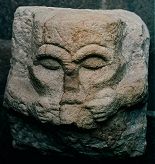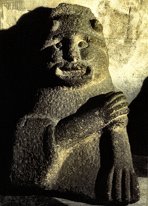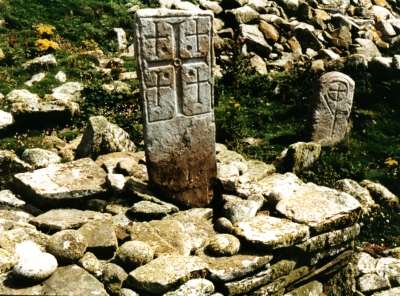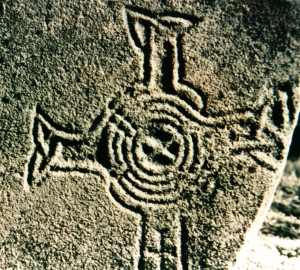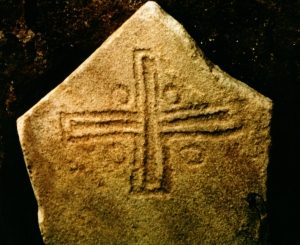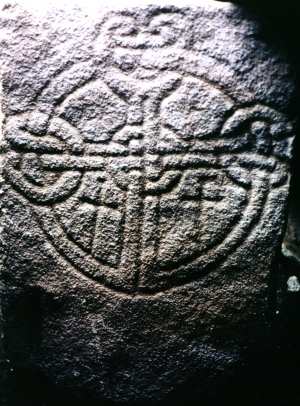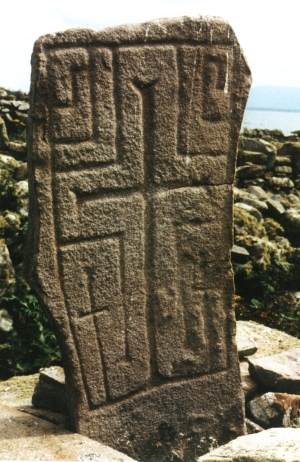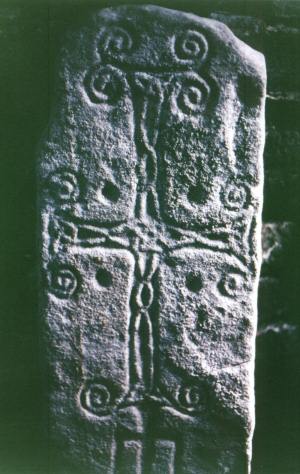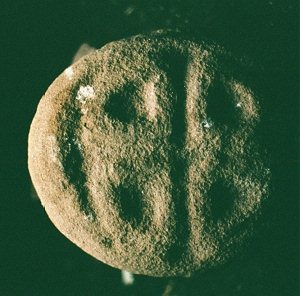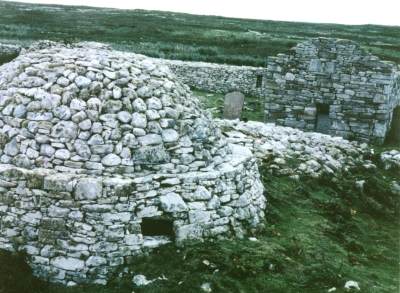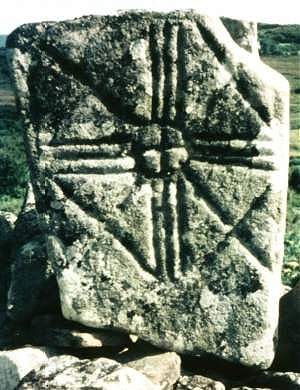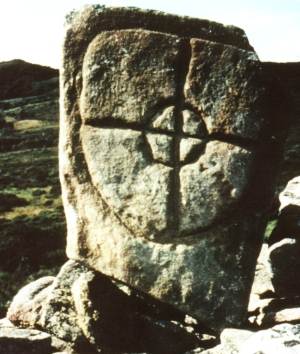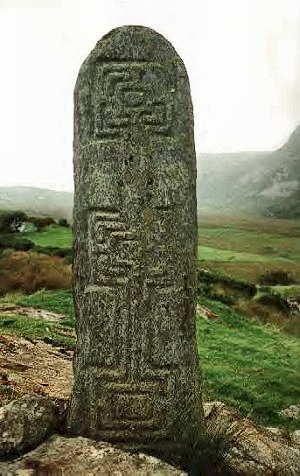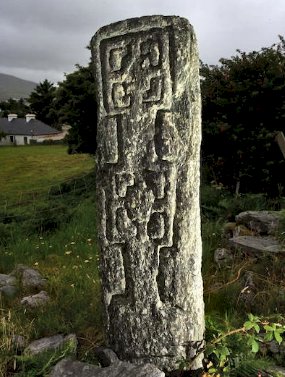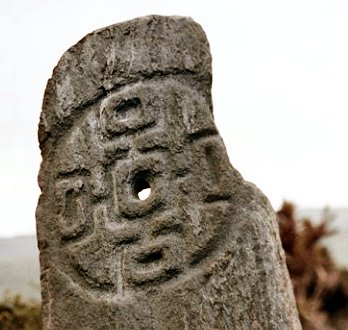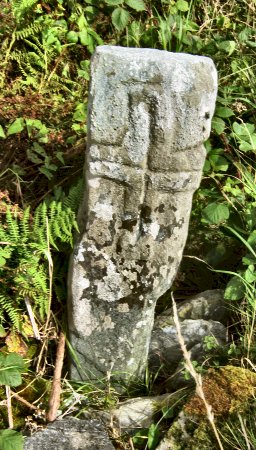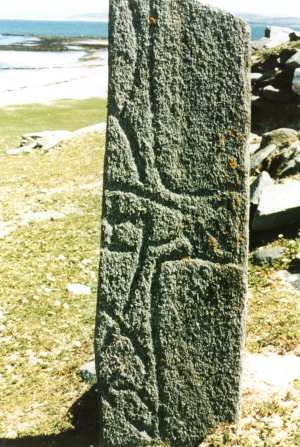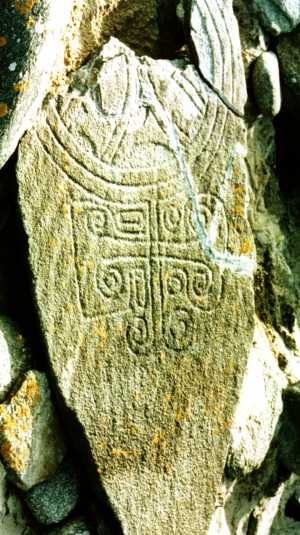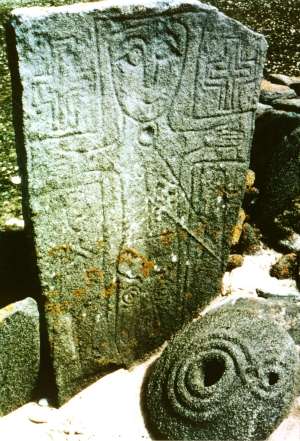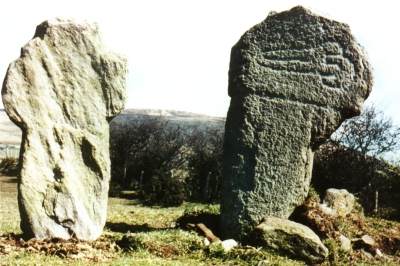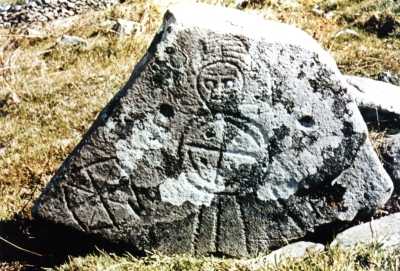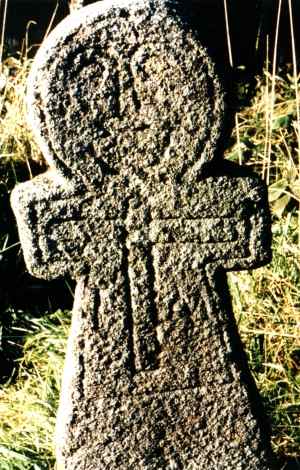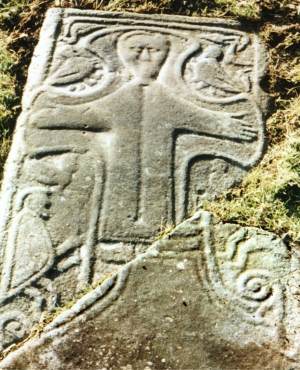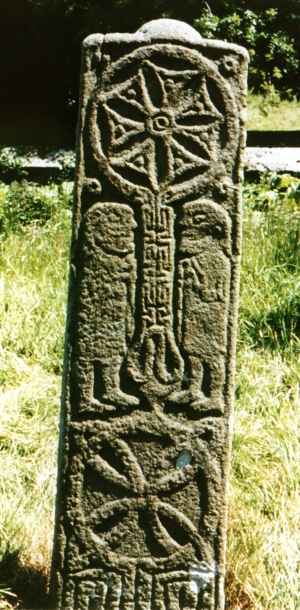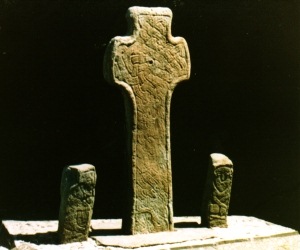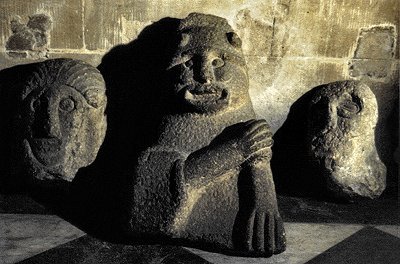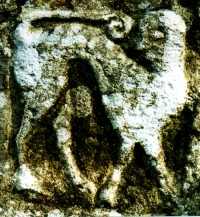
|
stone forts, crannógs & souterrains
|
|
AND CROSS-SLABS part three
On the island of Inishmurray, off the coast of Sligo, many cross-slabs and pillars survive, as well as ruined churches and monks' cells (known as clocháns). Some slabs and pillars have been set up on leachta, others stood or lay about until recently removed to the schoolhouse 'for their protection'.
A
panoramic virtual visit to the island, with an excellent essay
on its history, can be enjoyed at
The same combination of rectilinear with curvilinear design occurs on grave-slabs. One such, carved on both sides is one of a few known to have crossed and re-crossed the Atlantic as talismans to help the afflicted descendants of emigrants from the area.
Bruckless, county Donegal: two sides of the same slab.
The eighth 'station' at Glencolumbcille.
Inishbofin, co. Galway
Caher Island, co. Mayo On the island of Inishkea North, large cross-slabs (unlikely to be funerary) become crucifixion-slabs.
Inishkea North, county Mayo: At Kilnaruane in county Cork, an impressive schist pillar is carved on both sides. The SW side features SS Anthony and Paul the Hermit in the desert, a praying figure, and a cross. Uniquely on the NE side is a wicker-and-skin boat (currach) with rowers. It was from this area that St Brendan the Navigator sailed to Iceland. click
for a larger picture
Tullaghora, county Antrim
Legananny, county Down and, more spectacularly, at Skellig Michael, county Kerry.
Knappaghmanagh, county Mayo: The most sophisticated of the face-crosses, however, is not within the scope of this website, for it is on the Hebridean island of Colonsay, Scotland. This little
pillar, in a still-used ancient graveyard, is of the simpler,
more primitive kind.
Kilbroney, county Down.
It is in the north-west county of Donegal that pillars, slabs and crucifixions merge together, and associate with motifs drawn both from pre-Christian Ireland and Merovingian France. Inishkeel, county Donegal
Drumhallagh, county Donegal: Knots
and circular motifs of various kinds become a common feature on
the sculptured crosses of the following centuries - along with
enigmatic human figures,
as well as Biblical scenes such as The Fall, Cain and Abel, King
David playing his harp, Daniel in the Lions' Den, the Baptism
of Jesus, and the Last Supper.
Cross-pillar, Carndonagh, county Donegal
Cross and "guard-pillars", Carndonagh,
county Donegal;
"Guard-pillar" of the cross at
Carndonagh, county Donegal:
The pages "Enigmas
of the Irish Crosses" Manticora on the side of a cross-pillar
(or cross-shaft)
|
